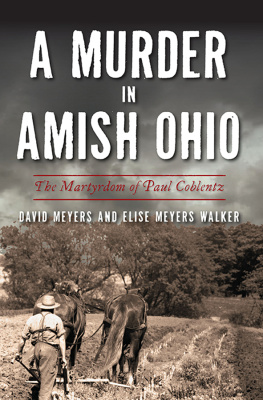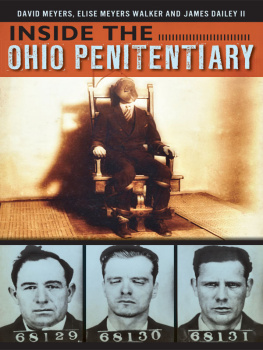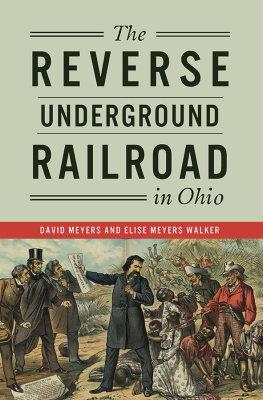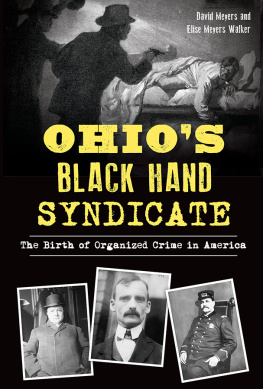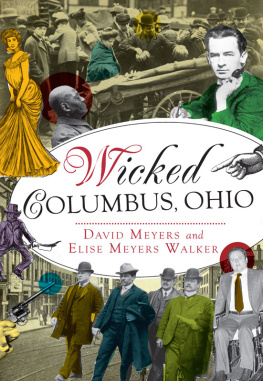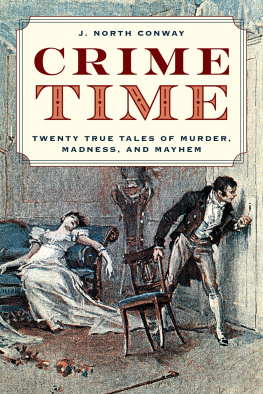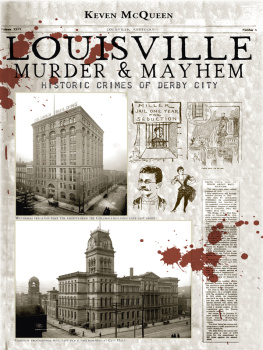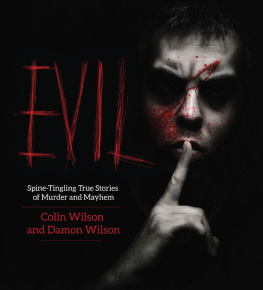HISTORIC
COLUMBUS
CRIMES
HISTORIC
COLUMBUS
CRIMES
MAMAS IN THE FURNACE,
THE THING & MORE
DAVID MEYERS & ELISE MEYERS WALKER

Published by The History Press
Charleston, SC 29403
www.historypress.net
Copyright 2010 by David Meyers and Elise Meyers Walker
All rights reserved
First published 2010
e-book edition 2011
ISBN 978.1.61423.120.2
Library of Congress Cataloging-in-Publication Data
Meyers, David, 1948
Historic Columbus crimes : mamas in the furnace, the thing, and more / David Meyers
and Elise Meyers Walker.
p. cm.
Includes bibliographical references.
print edition ISBN 978-1-59629-215-4
1. Crime--Ohio--Columbus--History--Anecdotes. 2. Murder--Ohio--Columbus--History-
Anecdotes. 3. Columbus (Ohio)--History--Anecdotes. I. Walker, Elise Meyers. II. Title.
HV6795.C7M49 2010
364.15230977157--dc22
2010041894
Notice: The information in this book is true and complete to the best of our knowledge. It is
offered without guarantee on the part of the authors or The History Press. The authors and
The History Press disclaim all liability in connection with the use of this book.
All rights reserved. No part of this book may be reproduced or transmitted in any form
whatsoever without prior written permission from the publisher except in the case of brief
quotations embodied in critical articles and reviews.
CONTENTS
AKNOWLEDGEMENTS
Columbus is fortunate to have one of the best public library systems in the nation. In researching Historic Columbus Crimes, we made liberal use of its resources. We would particularly like to thank Julie Callahan and Nick Taggart for their help and encouragement. All images from the Columbus Metropolitan Librarys Digital Collections are marked (CML).
We are also grateful for the assistance of Officer Amy Morris and Detective David Morris (retired) of the Columbus Police Department. It is due to the tireless efforts of such dedicated law enforcement officers that we have fewer lingering mysteries than we might otherwise. Photos taken from police files are marked (CPD).
Additionally, we are indebted to Bob Parrott and the Union County Historical Society for the use of the photo of Forest Bigelow (UCH), the Franklin County Sheriffs Department for the photos of the Lewingdon brothers (FCS), the Columbus Dispatch for the photo of Laura Carter (CD), Sam Walker for the illustration of The Thing (SW) and Rebecca Felkner of the Grandview Heights Public Library for photos from the Columbus Citizen/Citizen-Journal Newspaper Collection (CCJ). All other images are from private collections (PC).
Finally, we would like to acknowledge Joe Gartrell of The History Press for inviting us to pitch a book to them. We hope it meets his expectations.
Historic Columbus Crimes is dedicated to Beverly Meyers, the wife and mother who puts up with and even encourages the nonsense that is involved in writing a book. (If she wouldnt read so many books, maybe people wouldnt write them.)
INTRODUCTION
It was a late Monday afternoon when Reverend Clarence V. Sheatsley gathered his children together for an impromptu family meeting. Unfortunately, their mother was unable to attend because, as he calmly informed them, Mamas in the furnace.
The Sheatsleys seemed unlikely candidates for a domestic scandal, but Addie Sheatsleys bizarre death changed that. Suddenly, the most intimate details of their personal lives became a matter of public recordand fodder for neighborhood gossip. But the more mundane revelations are often as intriguing as the crimes themselves.
Whether or not Lizzie Borden chopped up her mama and papa, I remain fascinated by the fact that the Bordens continued to dine on mutton that had been left out for several days. Similarly, my daughter (and co-author) is struck by Lizzies always referring to their maid, Bridget, by the pejorative Maggie. It is in such trivia that we discover the truth about who they were, irrespective of their guilt or innocence.
Crime cuts across all social strata, and in its wake, a window is opened up into the lives of people who may not, at first glance, be like us. Many of the incidents discussed in this book are from the distant past, and as L.P. Hartley observed in his novel, The Go-Between, The past is a foreign country; they do things differently there. Medical students no longer have to double as body snatchers, and trolley car holdups are not the scourge they once were.
We have also included more contemporary crimes ripped from the headlines, as they used to say. Some of these people do things differently, too, but others may be uncomfortably like us or, at least, like someone we know. Consider the grieving widower held up as a role model in a Christian magazine even as he was holding up banks and armored cars. Or the college coed slain by a stray bullet while on her way to dinner with her parents, the unintended victim of a turf war between rival gangs.
The sixteen tales we have selected for Historic Columbus Crimes: Mamas in the Furnace, the Thing and More are some of the most sensational that have taken place in a city that is not generally known for sensational crimes. In fact, as recently as 1959, Columbus was proclaimed the most murder-free big city in the nation. Good for those of us who live here, if not for those who author true crime books.
But even the smallest town has its scandalous episodes, and as the sixteenth largest city in the country, Columbus has had its share. We trust that you will find them as interesting as we do.
CHAPTER 1
THE RESURRECTION WAR
On November 18, 1839, Patient No. 22 passed away at the Ohio Lunatic Asylum in Columbus. The record states that she was much improved since being admitted forty-eight weeks earlierexcept, of course, she was now dead.
Word was sent to the deceaseds family in Marietta, Ohio, some 125 miles away, but the primitive roads, little more than muddy scars through the forest, were nearly impassable owing to the early winter rains. So the grim task of coming to claim the body was unavoidably delayed. Meanwhile, Patient 22Sally Dodge Cram by namewas interred in a paupers grave in the Old North Graveyard, just beyond the Columbus city limits.
Born December 26, 1783, Sally Dodge married Jonathan Cram at the age of twenty. Thirteen years later, the family moved from Hampton Falls, New Hampshire, to Marietta, Ohio, where Sallys father was a prominent member of the pioneer community. Jonathan became a merchant, and his store on the east side of the Muskingum River ferry landing prospered. However, when he died suddenly in 1820 at the age of forty-two, he left behind a thirty-six-year-old widow and four children, the youngest only five months old.
Over the next eighteen years, Sallys mind became increasingly unhinged. Rebecca, her eldest child and only surviving daughter, was largely responsible for raising her siblings. When she married at twenty-three, Rebecca took the youngest, Jacob, nine, to live with her.
By the time Sally was committed to the newly opened Ohio Lunatic Asylum on December 21, 1838, she had been suffering from moral insanity for three years. As the asylum directors later noted, the cholera epidemic of 183234 had given a great impulse to whiskey and brandy drinking, of which the fruits were fully developed in 1839. Whether alcohol was a factor in Sallys mental instability, however, is speculative.
Next page

